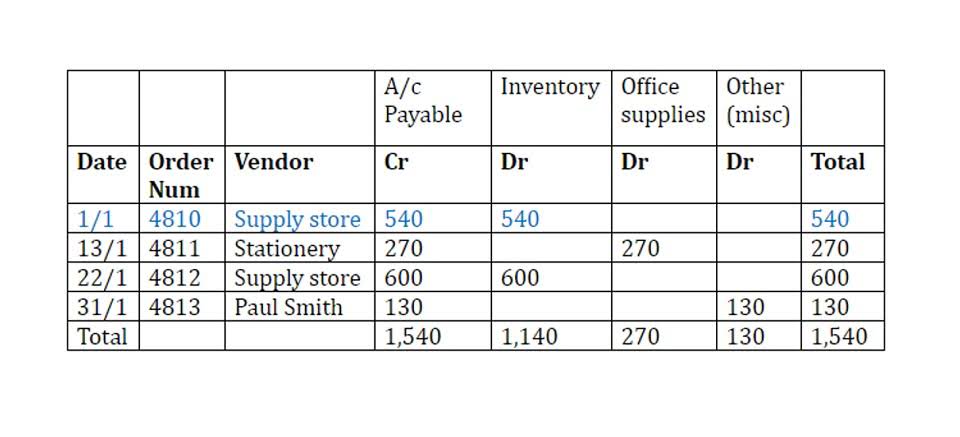
Inaccuracies in the data can stem from various sources, such as discrepancies in financial records, errors in data entry, or miscalculations during reconciliations. For example, if a company fails to reconcile its bank statements accurately, the opening balance may include incorrect figures, impacting subsequent financial decisions. Accountants, on the other hand, rely heavily on opening balances to ensure accurate financial reporting. They use these balances to reconcile accounts, verify the accuracy of transactions, and identify any discrepancies that may arise. By meticulously analyzing opening balances, accountants can ensure the integrity of financial statements, which is crucial for maintaining transparency and complying with legal and regulatory requirements. An opening balance sheet contains the beginning balances at the start of a reporting period.
What are opening balances and closing balances used for?

For example, the year-end accounts for your business won’t just show your annual profits for the year. You can use them to view the accumulated profits from all of the years you’ve been operating, including your assets, such as your bank balance and your liabilities, like loan repayments. With your assets and liabilities recorded, as well as any owner equity which has been invested in the company, your opening balance sheet can be drawn up. A balance is described as being “carried down” (c/d) when it is carried down from one accounting period and onto the next. It is synonymous with the term “closing balance” which is explained in more detail above.
Closing Balance

This can result in misleading financial assessments and potentially wrong investment decisions. In accounting, beginning and ending balances are used interchangeably with opening and closing. For the sake of easy understanding, I am assuming the beginning and ending balance of opening balance equity an account to be the opening and closing balance of a ledger account.
Opening balance sheet
By comparing the opening balance with the closing balance of the previous period, business owners can analyze the net sales growth or decline in their assets, liabilities, and equity. This information is invaluable for making strategic decisions, setting realistic goals, and developing effective financial plans. From the perspective of a business owner or manager, maintaining accurate opening balance management is essential for several reasons.

- Any investments or loans will be entered as transactions during your designated financial period, so you don’t need to include them here.
- To make the above concept easy and understandable, a snippet of the cash account will help you in understanding the opening and closing balance of an account.
- An opening balance is the amount of money a business has available at the start of a specific accounting period.
- This amount is now the first entry in the books of accounts and acts as the opening balance for the new financial year.
- You can keep track of your accounts and get a real-time snapshot of your company’s financial health at any given time with just a few clicks.
- In the simplest of terms, a company’s opening balance refers to the funds in its account at the start of a new financial period.
- Different regions and industries have specific guidelines that must be followed.
Molly set up a catering business, selling sandwiches to the staff of local businesses and students. Her company began trading on 12 March 2021, with an opening balance of £15,000 which she invested from her own funds. Over the course of her first year in business, she received £27,000 from her customers, but had to pay out £14,000 to cover her expenses. Accurate recording of opening balances ensures the integrity of financial statements and facilitates proper financial analysis. B/D and C/D are abbreviations used in accounting when referring to the opening balance and closing balance of a business.
Main Purposes of Financial Statements (Explained)
Mooncard offers simple, tailor-made bookkeeping for cleaning business solutions which can allow your closing balance to be carried over automatically into the next accounting period, seamlessly setting the groundwork for the year ahead. Whether you use accrual or cash flow accounting methods, financial statements can be generated on demand, whether it be for audit purposes or just for internal analysis. This balance (whether it’s positive or negative) is brought forward to become your business’ opening balance.
- It can also be used to provide clear and transparent answers to your investor or the taxman.
- It’s the starting point, the foundation upon which all future financial transactions and decisions will be built.
- An accurate opening balance ensures a seamless transition from one accounting period to the next.
- Moreover, opening balances aid in determining the profitability of a venture by comparing the revenue generated in subsequent periods against the initial investment.

In many cases, the business owner will invest funds into the company in order to set it up, either from their own savings, in the form of investments from “angel” investors or a loan from the bank. The closing balance recorded in the year-end account is brought forward and is identical to the opening balance at the beginning of the next accounting period. Businesses evolve over time, and changes in operations, financial structure, or strategies may render historical data obsolete or less pertinent. Imagine a retail company relying on an outdated opening balance that doesn’t account for a recent shift in product lines.
pricing, and service options subject to change without notice.
It is a key indicator of the company’s financial health and an indicator of where and how the company can grow. An opening balance is the amount of money a business has available at the start of a specific accounting period. This period could be a day, a week, a month, a quarter or a year, depending on how the business manages its finances.